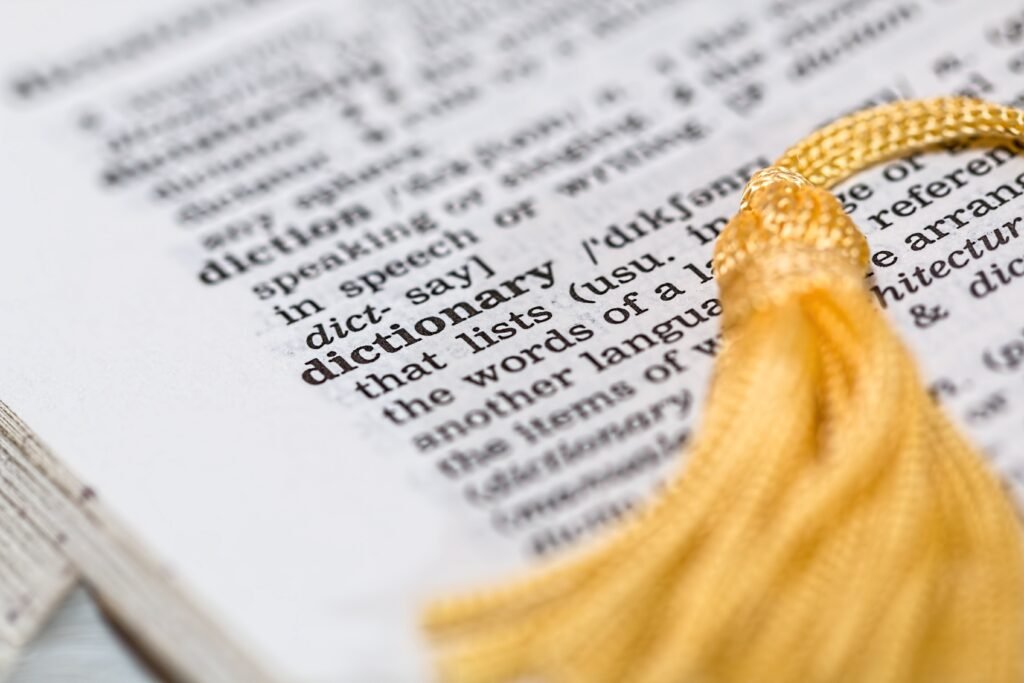“Mastering apostrophes in English: Six Simple Steps” is an informative article that provides English learners with essential knowledge on how to effectively use apostrophes. The article highlights the six most common uses of apostrophes, such as indicating possession, creating contractions, forming plurals of letters, denoting decades, using “o’clock,” and showcasing informal speech and dialogue. It explains that possession is signified by adding an apostrophe and an “s” for singular words and an apostrophe after the “s” for plural words. Additionally, contractions demonstrate the omission of letters in a word. The article also demonstrates how apostrophes are employed when forming plurals of letters, denoting decades, and writing “o’clock.” Furthermore, it explores how apostrophes can be used to represent the omission of sounds or syllables in informal speech. With these insights, English learners can confidently harness the power of apostrophes in their writing, speaking, and reading.

Understanding Possession
Possession is a fundamental aspect of English grammar that involves indicating ownership or belonging. There are two basic rules for indicating possession: one for singular words and another for plural words.
Learning the basic rule for singular possession
In singular possession, the basic rule is to add an apostrophe followed by an “s” (‘s) after the noun. For example:
- John’s car
- Mary’s book
The use of the apostrophe and “s” indicates that the car belongs to John and the book belongs to Mary.
Understanding the rule for plural possession
When indicating possession for plural words, the general rule is to add an apostrophe (‘) after the “s” at the end of the word. For example:
- The students’ projects
- The dogs’ leashes
In these examples, the apostrophe after the “s” indicates that the projects belong to multiple students and the leashes belong to multiple dogs.
Learning exceptions to the possession rule
Although the basic possession rules mentioned above apply to most cases, there are exceptions. For nouns that already end in an “s,” indicating possession can be done by adding just an apostrophe (‘), without an additional “s.” For example:
- James’ car
- The Jones’ house
In these examples, the possessive form is formed by adding only an apostrophe after the existing “s” at the end of the word.
Mastering Contractions
Contractions are commonly used in English to combine two words by omitting letters and replacing them with an apostrophe. Understanding and using contractions effectively can greatly improve one’s English language skills.
Identifying common contractions
Common contractions include:
- “I’m” (I am)
- “you’re” (you are)
- “can’t” (cannot)
- “he’s” (he is)
- “it’s” (it is)
- “we’ve” (we have)
- “they’ll” (they will)
These contractions are frequently used in spoken and written English to create a more relaxed and conversational tone.
Learning how contractions are formed
Contractions are formed by removing letters from the original words and replacing them with an apostrophe. For example:
- “Do not” becomes “don’t”
- “Will not” becomes “won’t”
- “Is not” becomes “isn’t”
By Mastering the formation of contractions, English learners can enhance their ability to express themselves more naturally and fluently.
Practicing contractions in writing
To improve their proficiency in using contractions, English learners should practice incorporating contractions into their writing. They can start by writing simple sentences and gradually incorporating more complex contractions. This practice will help improve both their writing skills and their understanding of how contractions are used in everyday English communication.

Using Apostrophes in Plurals
While apostrophes are commonly associated with possession, they can also play a role in forming plurals.
Understanding why apostrophes are used in plurals of letters
Apostrophes are used in the plurals of certain letters to indicate that there are multiple instances of a letter. For example:
- There are two “i’s” in “skiing.”
- The word “Mississippi” contains four “s’s.”
By using apostrophes in these cases, it becomes clear that there are multiple instances of the letter being referred to.
Learning how to form plurals of letters with apostrophes
To form plural words using apostrophes for letters, simply add an apostrophe followed by an “s” (‘s) after the letter. For example:
- The plural of the letter “x” is “x’s.”
- The plural of the letter “p” is “p’s.”
Remembering this rule will help English learners accurately convey the plural forms of letters in their writing.
Recognizing when to use and when not to use apostrophes in plurals
It is important to note that apostrophes should never be used to form regular plurals of words. For example, it is incorrect to write “apple’s” to indicate the plural form of “apple.” Instead, simply add an “s” to form the plural: “apples.”
Using apostrophes solely for plurals can lead to confusion and is considered incorrect in standard English usage. Reserve the use of apostrophes for situations of possession or when indicating contractions or omissions.
Writing Decades with Apostrophes
When writing about decades, specifically abbreviating the years of a particular decade, an apostrophe is used to indicate the omission of two numbers.
Understanding the purpose of apostrophes in writing decades
Apostrophes are used to abbreviate decades by omitting the first two numbers. For example:
- The 1990s can be written as the ’90s.
By using an apostrophe before the “90s,” it is implied that the decade being referred to is the 1990s.
Learning how to properly write decades with apostrophes
To write decades with apostrophes, simply place an apostrophe before the abbreviated form of the years. Here are a few examples:
- The 1980s can be written as the ’80s.
- The 1950s can be written as the ’50s.
By using apostrophes in this way, English learners can accurately and concisely reference specific decades in their writing.
Practicing writing decades with apostrophes
To become proficient in writing decades with apostrophes, English learners should practice integrating this convention into their writing. By incorporating the use of apostrophes when discussing decades, they will enhance their ability to communicate effectively and contextually.

Getting Familiar with “O’clock”
The term “o’clock” is a common expression used to indicate the time on the hour. It is important to understand why “o’clock” is written with an apostrophe and how to correctly place it.
Understanding why “o’clock” is written with an apostrophe
The use of an apostrophe in “o’clock” represents the linguistic abbreviation of the word “of.” Historically, “of” was used to indicate the relationship between the hour and the clock. In modern usage, the apostrophe has become a convention to visually separate the hour from the clock.
Learning the correct placement of the apostrophe in “o’clock”
The apostrophe in “o’clock” should be placed immediately after the “o.” For example:
- 5 o’clock
- 7 o’clock
By placing the apostrophe in the correct position, English learners can properly express the hour on the clock.
Using “o’clock” in sentences and conversations
When using “o’clock” in sentences or conversations, English learners should remember to incorporate the appropriate time and context. For example:
- “Let’s meet at 3 o’clock in the afternoon.”
- “The train arrives at 7 o’clock tonight.”
By applying this usage consistently, English learners can effectively communicate time-related information using the term “o’clock.”
Using Apostrophes in Speech and Dialogue
In addition to formal usage, apostrophes are also used in informal speech and dialogue to indicate the omission of sounds or syllables. Recognizing and understanding the informal use of apostrophes in speech and dialogue is essential for effective communication.
Understanding the informal use of apostrophes in speech and dialogue
In informal speech and dialogue, apostrophes are commonly used to indicate the omission of sounds or syllables. This omission reflects the natural flow of spoken language, making it essential for English learners to identify and interpret these omissions.
Identifying instances when apostrophes are used to indicate omissions
In spoken language, certain words are often shortened or contracted, using apostrophes to indicate the omissions. Here are a few examples:
- “It’s” (it is)
- “I’ve” (I have)
- “Wouldn’t” (would not)
- “Should’ve” (should have)
By recognizing these contractions and understanding their meaning, English learners can better comprehend informal speech and engage in more natural conversations.
Practicing the use of apostrophes in speech and dialogue
To improve their ability to understand and use apostrophes in informal speech and dialogue, English learners should actively engage in conversations with native English speakers. By listening to and participating in conversations, they can familiarize themselves with the shortened forms and improve their comprehension and conversational skills.
Conclusion
Mastering the use of apostrophes in English requires understanding and practicing the six steps outlined in this article. By following these steps, English learners can improve their ability to indicate possession, form contractions, write plurals of letters and decades, use “o’clock” correctly, and comprehend informal speech and dialogue.
Recap of the six steps in mastering apostrophes
The six steps covered in this article are:
- Understanding the basic rule for singular possession and the rule for plural possession.
- Mastering the formation and usage of contractions.
- Learning how to use apostrophes in plurals of letters and avoiding their misuse.
- Writing decades with apostrophes accurately and concisely.
- Becoming familiar with the correct usage and placement of “o’clock.”
- Recognizing and using apostrophes in informal speech and dialogue.
Tips for continued practice and improvement
To continually improve their mastery of apostrophes, English learners should:
- Read extensively: Engage with a variety of written materials to encounter diverse examples of apostrophe usage.
- Practice writing: Incorporate apostrophes in everyday writing to reinforce understanding and usage.
- Engage in conversations: Actively participate in conversations to gain exposure to informal speech and dialogue, where apostrophes are frequently used.
- Seek guidance: Consult teachers, tutors, or language resources to clarify any uncertainties or questions regarding apostrophes.
Benefits of mastering apostrophes in English
Mastering apostrophes in English offers a range of benefits, including:
- Improved written communication: Accurate use of apostrophes enhances clarity and comprehension in written texts.
- Enhanced spoken communication: Understanding informal apostrophe usage enables more fluid and natural conversations.
- Cultural understanding: Proficiency with apostrophes helps English learners engage in cultural exchanges by correctly interpreting and using idiomatic language.
By mastering apostrophes, English learners can bolster their English language skills and confidently express themselves in both written and spoken forms.
